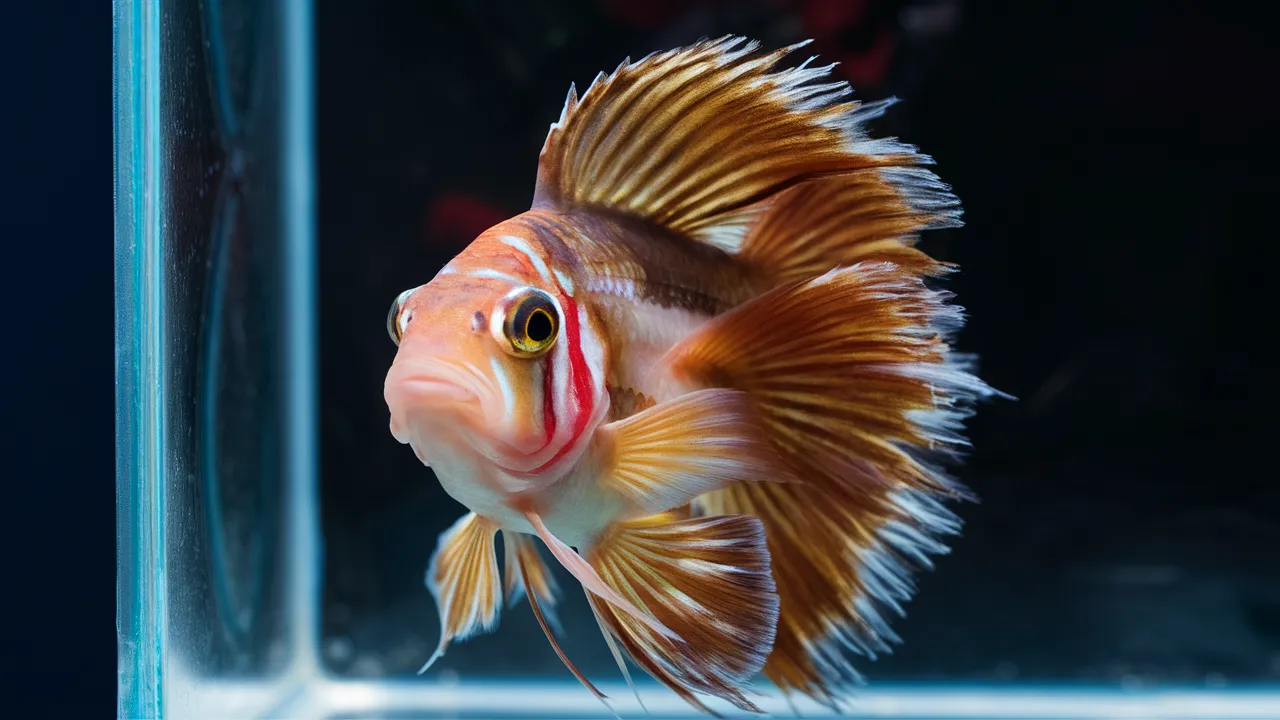Betta fish, with their striking appearance and captivating personalities, have long been a beloved addition to home aquariums. However, for those seeking a more harmonious and engaging environment, the concept of a betta sorority tank has gained significant attention. In this comprehensive guide, Betta Fish Tips will delve into the intricacies of setting up and maintaining a thriving betta sorority tank, providing insights and practical advice to ensure your underwater oasis is a true success.
Understanding Betta Sororities
Betta fish, also known as Siamese fighting fish, are renowned for their vibrant colors and their natural territorial instincts. Traditionally, betta fish are housed individually, as their aggressive tendencies can lead to fierce confrontations when kept together. However, the betta sorority tank offers a unique solution, allowing a group of female bettas to coexist harmoniously.
The Betta Sorority Concept
A betta sorority tank is a carefully curated aquarium that houses a group of female betta fish, typically ranging from 3 to 5 individuals. This setup allows the bettas to form a social hierarchy and engage in natural behaviors, while minimizing the risk of aggression and fin nipping. By providing ample space, hiding spots, and a balanced environment, a betta sorority can thrive and offer a captivating display of underwater grace and color.
Benefits of a Betta Sorority Tank
The betta sorority tank offers several advantages over the traditional single-betta setup. Firstly, it allows for a more enriched and stimulating environment for the fish, as they can establish social bonds and engage in natural behaviors. Secondly, it can be a visually stunning and mesmerizing display, with the vibrant colors and graceful movements of the female bettas creating a true underwater spectacle. Additionally, a betta sorority can be more cost-effective in the long run, as the cost of maintaining a single tank is spread across multiple fish.

Setting Up the Perfect Betta Sorority Tank
Establishing a successful betta sorority tank requires careful planning and attention to detail. Let’s explore the key considerations to ensure your underwater oasis is a thriving and harmonious environment.
Tank Size and Dimensions
The size of the tank is a crucial factor in the success of a betta sorority. Bettas require ample space to swim and establish their territories, and overcrowding can lead to aggressive behavior and stress. As a general rule, the minimum tank size for a betta sorority is a 20-gallon long aquarium, with a recommended size of 30 gallons or more for optimal results.
Filtration and Water Parameters
Maintaining excellent water quality is essential for the health and well-being of your betta sorority. Invest in a high-quality filtration system that can effectively remove waste and toxins, while also ensuring adequate water circulation. Additionally, monitor the water parameters closely, including pH, temperature, and water hardness, to ensure they fall within the optimal range for betta fish.
Decorations and Hiding Spots
Providing ample hiding spots and visual barriers is crucial in a betta sorority tank. Bettas are territorial by nature and require the ability to retreat and establish their own spaces within the aquarium. Incorporate a variety of decorations, such as live plants, driftwood, and rock formations, to create a visually appealing and functional environment.
Betta Selection and Acclimation
When selecting bettas for your sorority, it’s essential to choose females that exhibit calm and peaceful temperaments. Avoid mixing highly aggressive or overly dominant individuals, as this can lead to disputes and potential fin nipping. Carefully acclimate the bettas to their new environment, following best practices for introducing new fish to an established tank.
Maintaining a Thriving Betta Sorority
Ongoing care and attention are crucial to ensure the long-term success of your betta sorority tank. Let’s explore the key aspects of maintaining a harmonious and healthy underwater ecosystem.
Feeding and Nutrition
Bettas are carnivorous and require a diet rich in protein to thrive. Provide a balanced diet of high-quality betta-specific pellets, freeze-dried or frozen foods, and occasional live food treats. Avoid overfeeding, as this can lead to water quality issues and health problems.
Monitoring Behavior and Interactions
Regularly observe the interactions within your betta sorority, as this will help you identify any signs of aggression or potential conflicts. Be prepared to intervene if necessary, by separating or removing individuals exhibiting dominant or aggressive behavior.
Water Changes and Maintenance
Consistent water changes are essential for maintaining water quality and supporting the overall health of your betta sorority. Aim to perform partial water changes of 25-30% weekly, and be vigilant in monitoring water parameters to ensure they remain within the optimal range.
Introducing New Bettas
If you decide to introduce new bettas to an established sorority, exercise caution and follow a thorough acclimation process. Ensure the new fish are compatible with the existing group and provide ample hiding spots to help reduce the risk of aggression.
Conclution
By following these guidelines and maintaining a keen eye on your betta sorority, you can create a thriving and harmonious underwater ecosystem that provides a captivating and rewarding experience for you and your beloved betta fish.

Bài viết liên quan
What is Aquarium Bio Media?
Aquarium bio media, also known as filter media, is a crucial component in maintaining a [...]
Jul
What Kind Of Water For Fish Tank?
When it comes to keeping fish healthy and thriving in an aquarium, the quality of [...]
Jul
Understanding The Bio Balls Purpose
Bio balls, small hollow plastic spheres, play a crucial role in maintaining the health and [...]
Jul